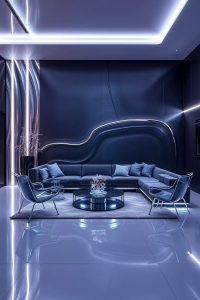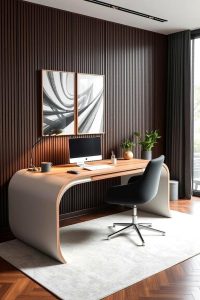The 20th century’s Bauhaus movement left an indelible mark on the world of design, seamlessly merging art, functionality, and simplicity into a timeless aesthetic. As we navigate modern interiors, its principles continue to guide us towards creating spaces that harmonize form and function. If you’re drawn to uncluttered spaces, clean lines, and a sense of balance, Bauhaus-inspired interior design may be the perfect fit for you.
By embracing geometric patterns that add visual interest, open floor plans that maximize space, and an understated approach to aesthetics, this style masterfully balances minimalism with personality. Whether redesigning your living room or kitchen, these ideas will help you achieve a look that’s both sleek and sophisticated, effortlessly exuding modern chic.
Functional Furniture Design
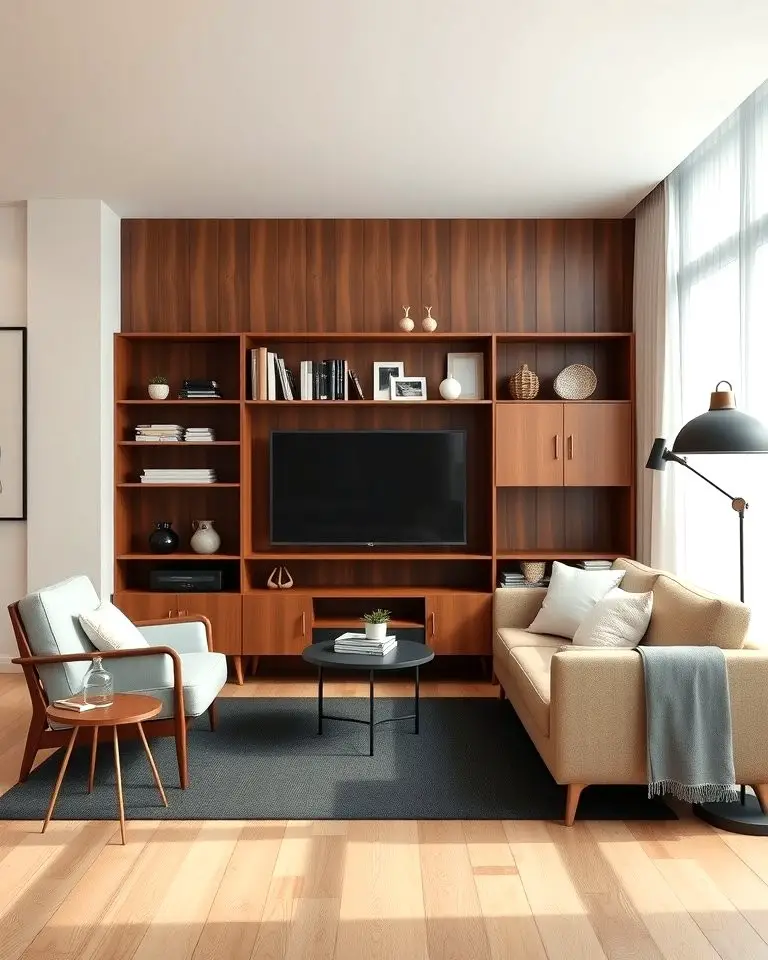
Bauhaus design’s foundation lies in the harmonious union of functionality and aesthetics. The approach yields furniture that is both practical and stylish. Characterized by simplicity, these pieces are often designed with multiple purposes in mind, making them well-suited for spaces of all sizes. By stripping away unnecessary ornamentation, the designs achieve a sense of clean lines and usability, resulting in environments that are not only visually appealing but also functional.
The emphasis on practicality allows for greater flexibility, enabling items like modular sofas and extendable tables to be adapted to meet various needs. This thoughtful blend of form and function yields a timeless sophistication that transcends trends.
Geometric Shapes and Patterns
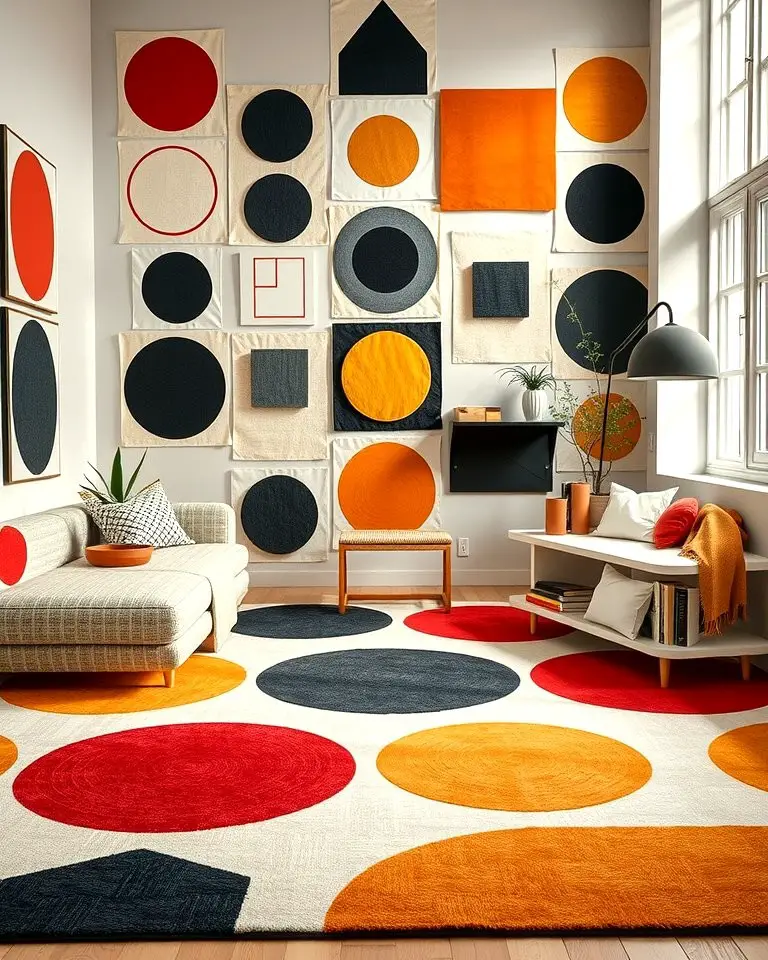
Bauhaus interior design’s affinity for geometry brings a sense of balance and harmony to any space. The incorporation of clean, bold shapes and patterns is a hallmark of this style, with circles, squares, and triangles often employed in furniture, textiles, and décor. By leveraging these elements, you can create a visually striking yet harmonious atmosphere that exudes modern sophistication.
Geometric designs not only captivate the eye but also instill a sense of order and structure, making them an excellent choice for spaces seeking a dynamic yet cohesive look.
Open Floor Concepts
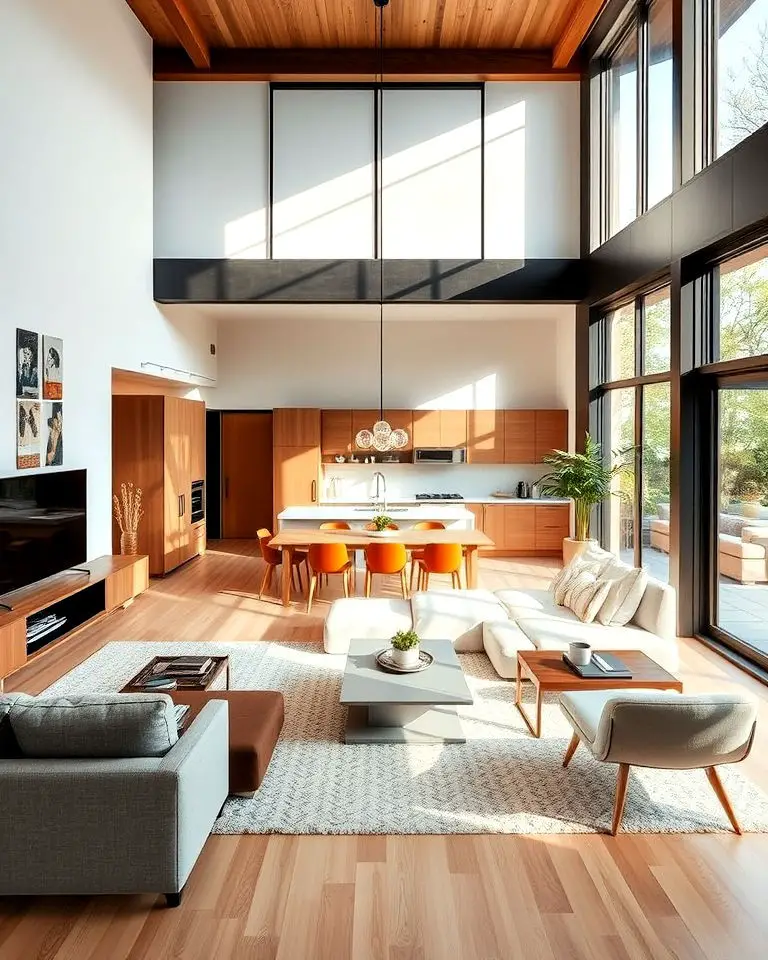
Bauhaus-inspired open floor plans revolutionize traditional notions of spatial separation by seamlessly integrating various rooms. By eliminating physical barriers like walls, this design philosophy cultivates an abundance of natural light and facilitates effortless connectivity between spaces. This streamlined layout not only creates a sense of grandeur and functionality but also nurtures a culture of interaction and togetherness within the home.
For instance, merging your living, dining, and kitchen areas into a single harmonious space can result in a truly inviting and uncluttered environment that exudes modern sophistication.
Neutral Color Palettes
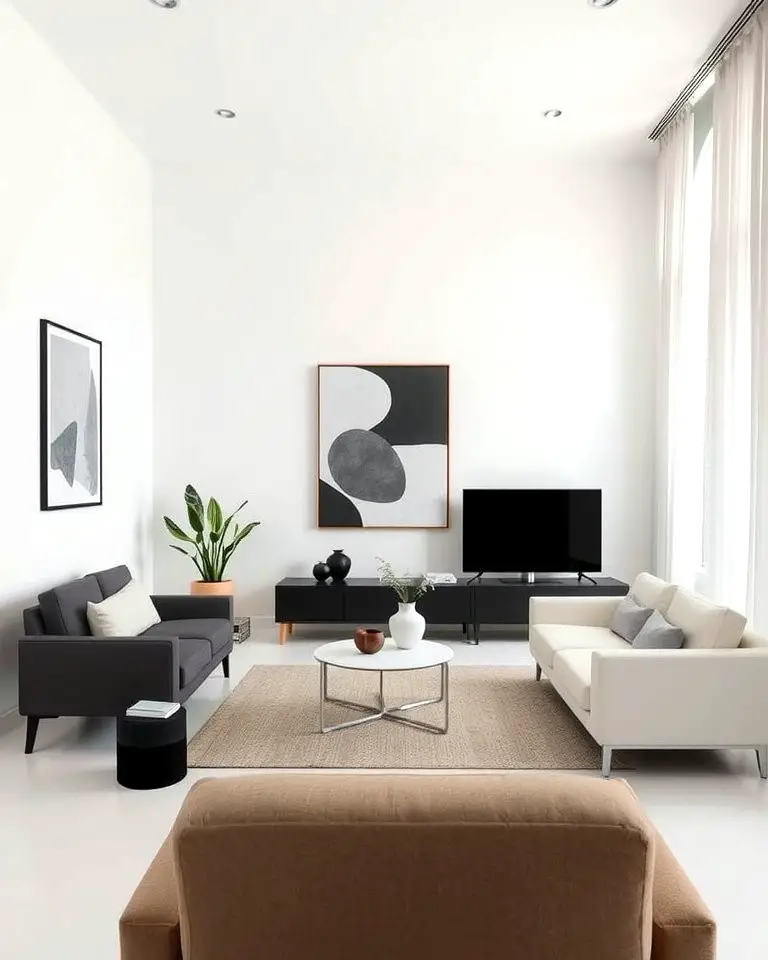
Bauhaus interiors are defined by their reliance on neutral colors, which provide a calming and versatile foundation for the space. A palette dominated by shades like white, gray, beige, and black creates a clean and cohesive look that allows other design elements to take center stage. By using these neutral tones on walls, floors, and larger furniture pieces, you can create a harmonious atmosphere where statement pieces can shine without competing for attention.
Furthermore, neutral palettes offer the flexibility to incorporate pops of color or geometric accents without overwhelming the design, making it easier to add visual interest and depth.
Minimalist Lighting Fixtures
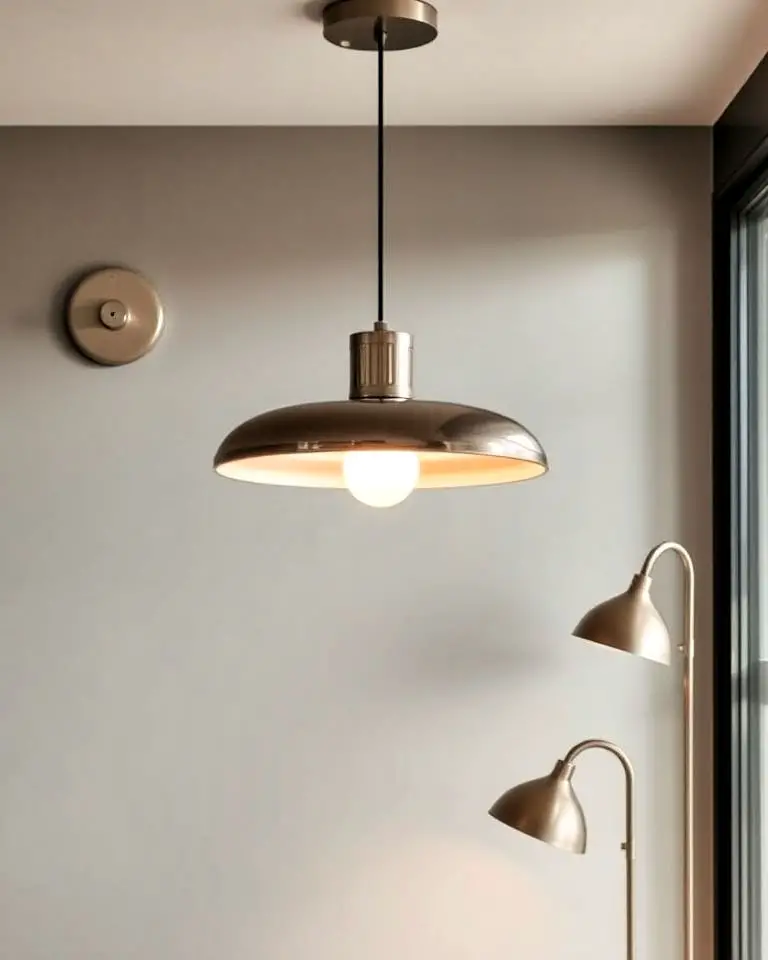
In a Bauhaus-inspired interior, lighting is used to create a harmonious balance between form and function. Simple, unobtrusive fixtures such as pendant lights, floor lamps, or sconces are often preferred for their clean lines and ability to serve multiple purposes. Not only do these fixtures provide efficient illumination, but they also double as understated decorative elements that add depth and visual interest to the space.
The use of materials like metal, glass, or chrome further reinforces the modern aesthetic, while proper lighting design ensures a welcoming ambiance that honors the Bauhaus philosophy of intentional design.
Sleek Built-In Storage
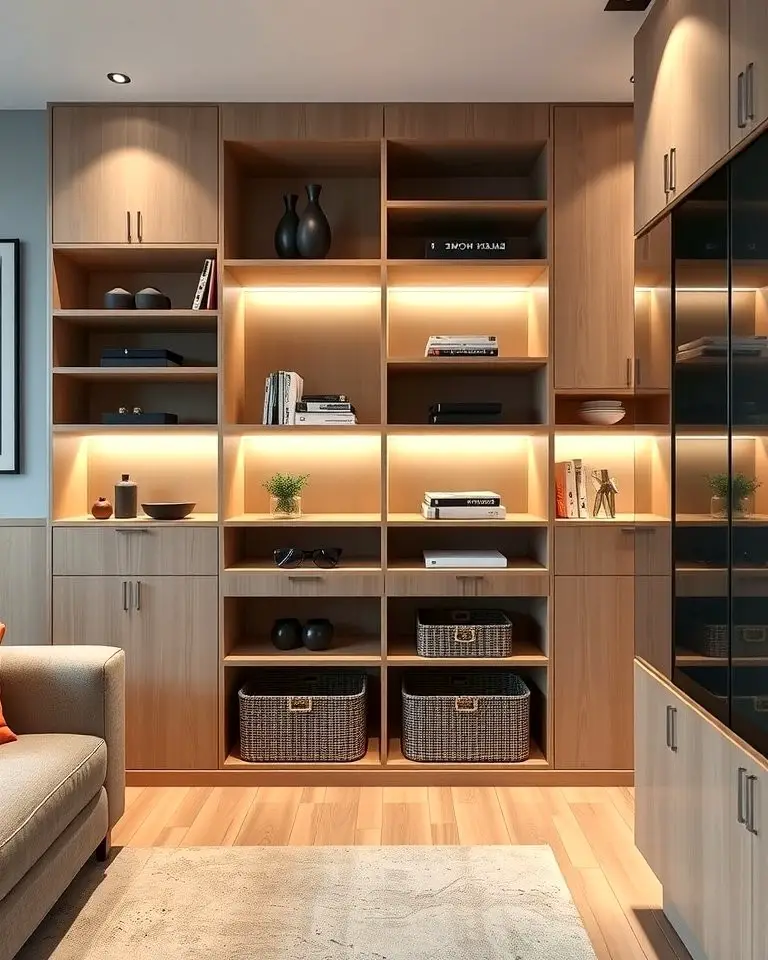
Embracing the Bauhaus spirit of functionality and minimalism, built-in storage solutions seamlessly integrate with walls, furniture, or under staircases to create a clutter-free environment. The clean lines and understated hardware of these designs ensure a harmonious visual flow that aligns perfectly with the overall aesthetic. By incorporating built-in shelves, cabinets, or hidden compartments, you can effectively maximize space while keeping essential items organized and out of sight.
This thoughtful approach not only boosts practicality but also fosters a sense of cohesion throughout your home, making it an ideal solution for those seeking a streamlined and elegant living space.
Glass and Metal Accents
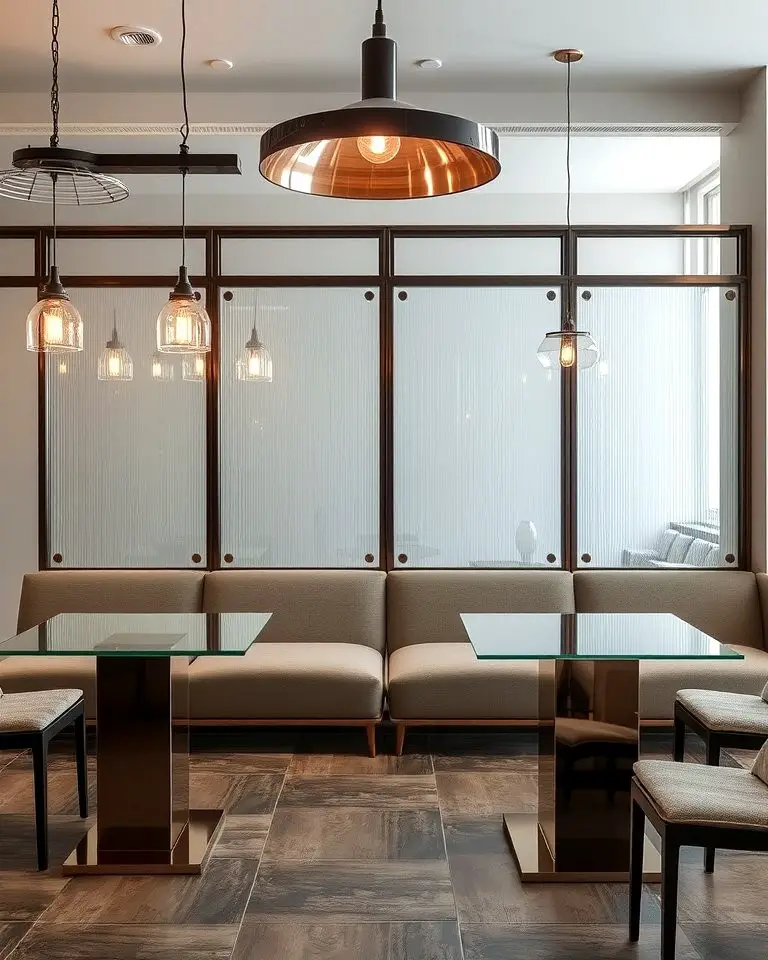
Incorporating glass and metal into your interior design is a hallmark of the Bauhaus style, a nod to its industrial heritage. These elements bring a modern, high-tech feel to a space while emphasizing durability and practicality. Glass surfaces, such as tabletops or room dividers, create an airy sense of openness, while metal accents in furniture or lighting fixtures add a touch of sophistication.
The strategic combination of these materials strikes a balance between transparency and sturdiness, resulting in a look that is both contemporary and timeless.
Open Shelving Concepts
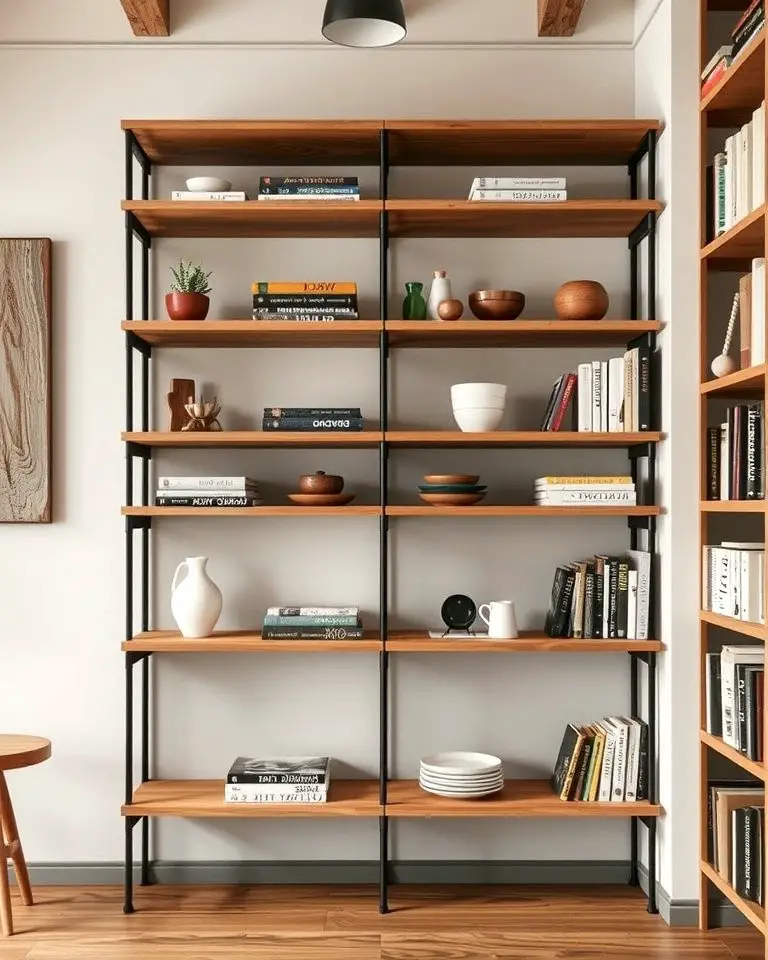
Incorporating open shelving into a space is all about embracing simplicity and accessibility, much like the Bauhaus movement’s core principles. By thoughtfully displaying personal items such as books, ceramics, or decorative objects, open shelves successfully merge functionality with character. Typically constructed from natural materials like wood or metal, these shelves boast clean lines that contribute to their understated elegance.
The beauty of open shelving lies not only in its storage capabilities but also in the opportunity to curate a visually appealing display. This approach strikes a perfect balance between organization and individuality, imbuing the space with an air of refinement and personality.
Abstract Art Incorporation
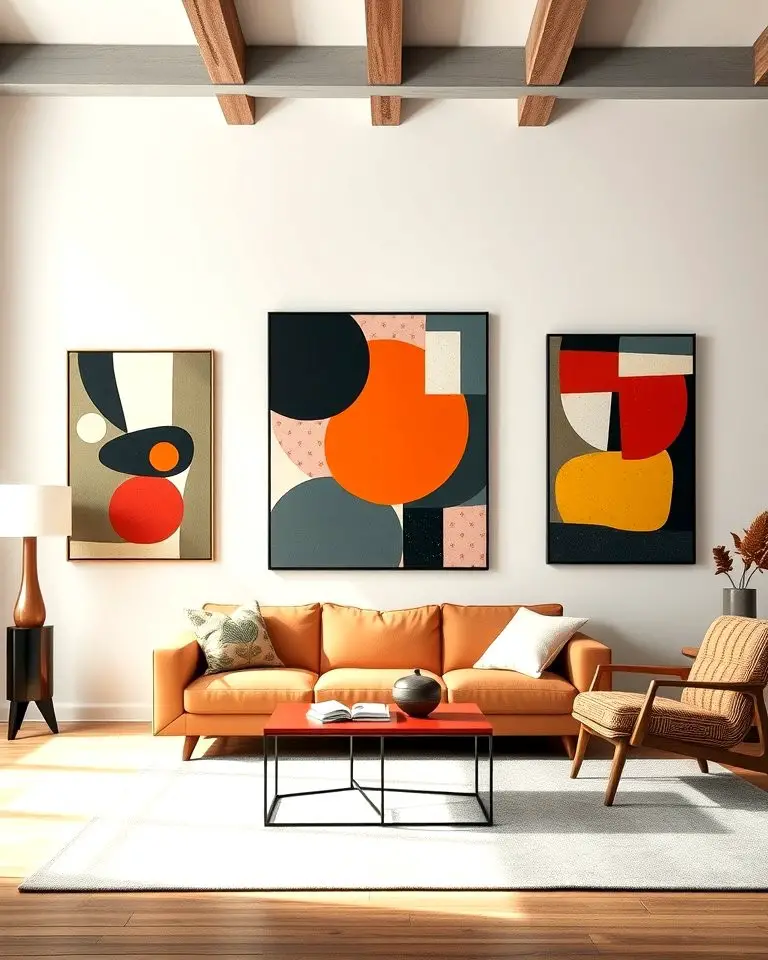
In harmony with the modernist ideals of Bauhaus design, abstract art becomes a seamless fusion of form and function. Geometric patterns, bold colors, and dynamic shapes converge to create an energetic focal point in the space. As visual anchors, abstract paintings or sculptures inject a touch of creativity into the room’s clean lines and neutral palette.
This harmonious union allows homeowners to express their individuality while staying true to the artistic essence of Bauhaus, bringing a unique perspective to their interior design.
Seamless Integration of Textiles
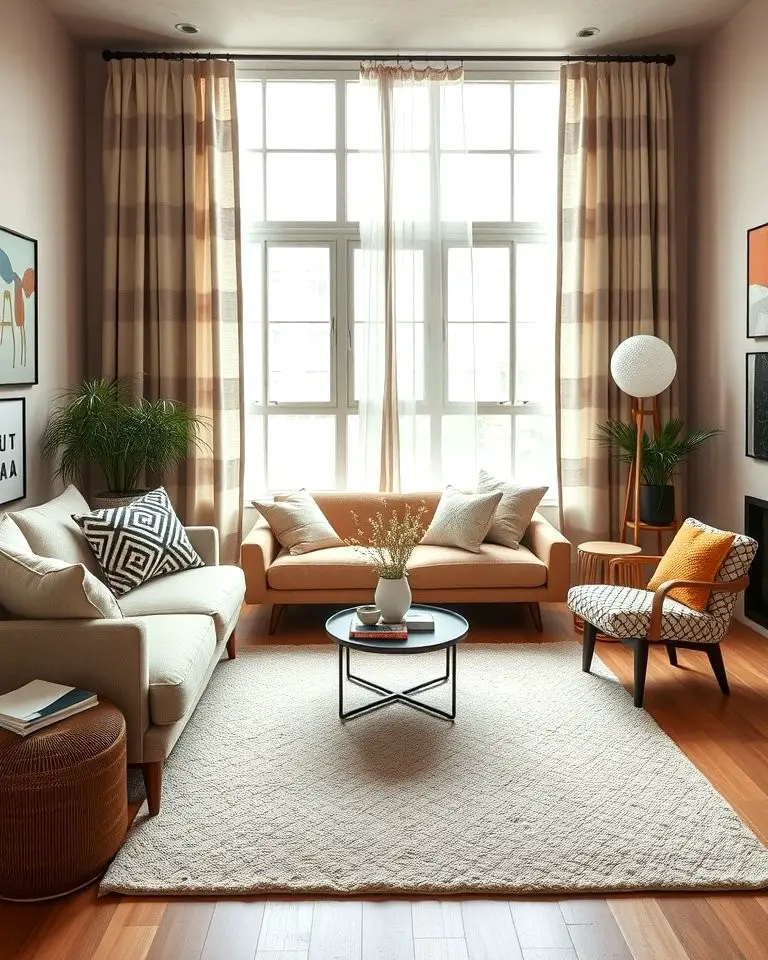
In Bauhaus-inspired interior design, textiles play a crucial role in achieving a harmonious balance between functionality and aesthetics. Geometric patterns and abstract designs dominate the scene, often presented in a palette of neutral or primary colors. These carefully curated elements add warmth, texture, and depth to the space, all while respecting the minimalist ethos.
To achieve this perfect blend of form and function, opt for natural materials like cotton or wool that exude durability, comfort, and an air of sophistication. By thoughtfully integrating textiles into the overall design, it’s possible to subtly soften the hard lines of furniture and architecture, ultimately creating a space that is at once inviting, practical, and visually stunning.
Functional Kitchen Design
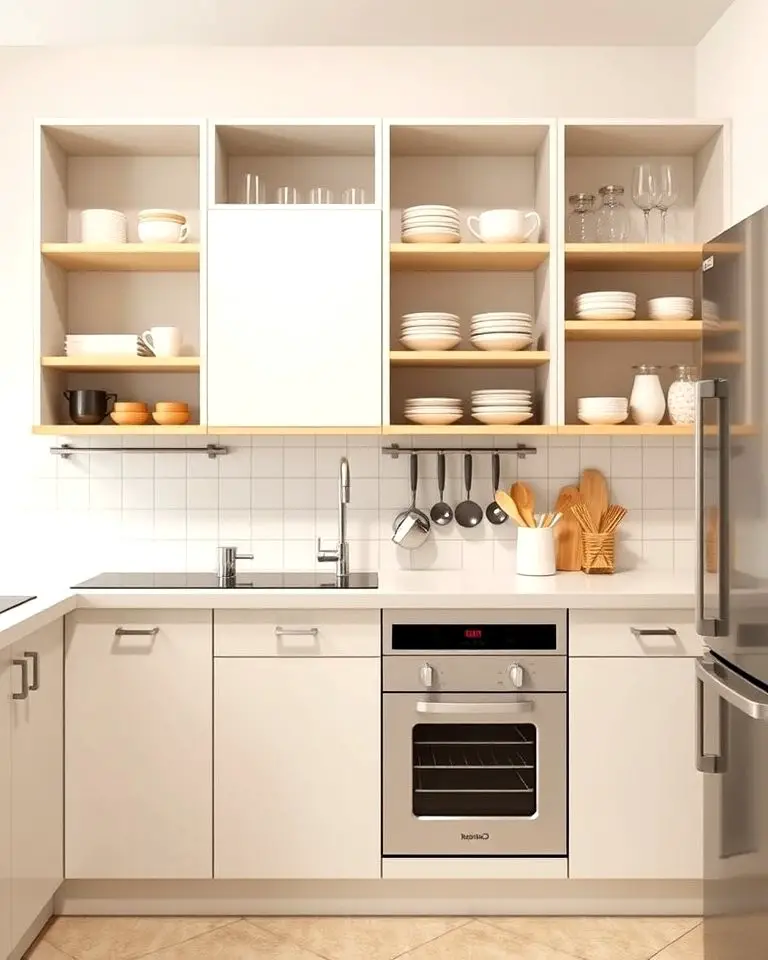
In a Bauhaus kitchen, functionality takes center stage. By incorporating streamlined cabinetry, open shelving, and thoughtful layouts, the design prioritizes usability. A predominantly neutral color palette, often featuring durable materials like stainless steel or wood, creates a modern yet practical atmosphere. To further enhance the space’s efficiency, incorporate multi-functional appliances and clever storage solutions.
The result is not only a kitchen that simplifies daily tasks but also one that beautifully complements your home’s overall aesthetic.
Modular Furniture Pieces
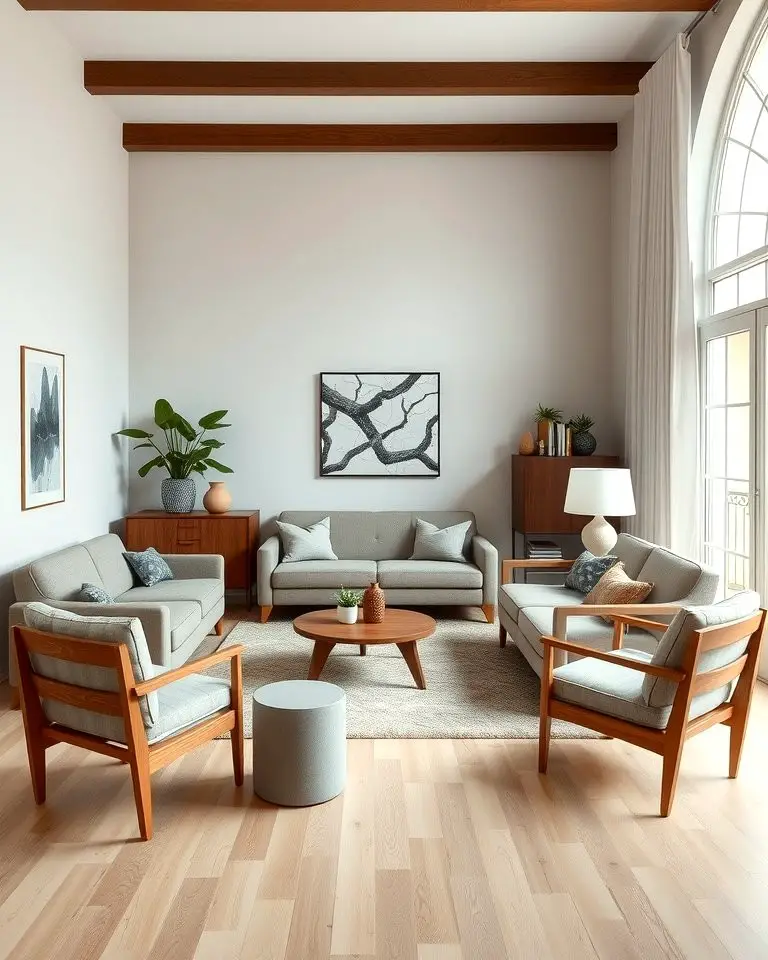
Embracing the spirit of Bauhaus design, modular furniture embodies the essence of adaptability and practicality. Rather than static pieces, modular furniture offers a range of flexible components that can be combined to suit diverse needs and spaces. From sectional sofas that morph into cozy conversation pits to stackable chairs that seamlessly integrate with any room, these designs prioritize versatility above all else.
The use of clean lines and durable materials ensures that such pieces not only look great but also withstand the test of time. In today’s fast-paced world where lifestyles are constantly evolving, modular furniture is an ideal solution for creating a dynamic environment that adapts effortlessly to changing circumstances.
Industrial-Inspired Décor
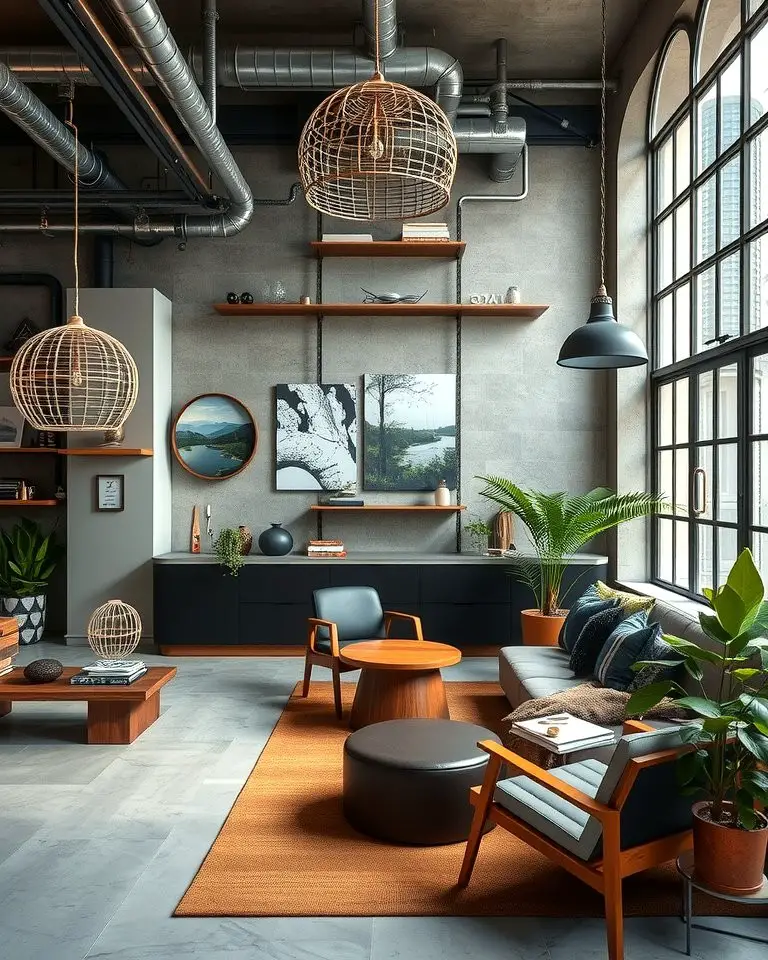
Bauhaus interiors are often characterized by the incorporation of industrial elements, such as exposed pipes, concrete surfaces, and metal finishes, which add a raw and edgy quality to the space. This emphasis on functional and honest materials reflects the movement’s focus on simplicity and functionality. When incorporating industrial-inspired décor, it’s essential to use restraint to maintain balance and avoid overwhelming the space.
A thoughtful addition of industrial accents, such as a concrete coffee table or metal pendant light, can add character without overpowering other design elements. These features lend a modern yet timeless appeal to your home, making them a versatile and enduring choice.
Multi-Functional Spaces
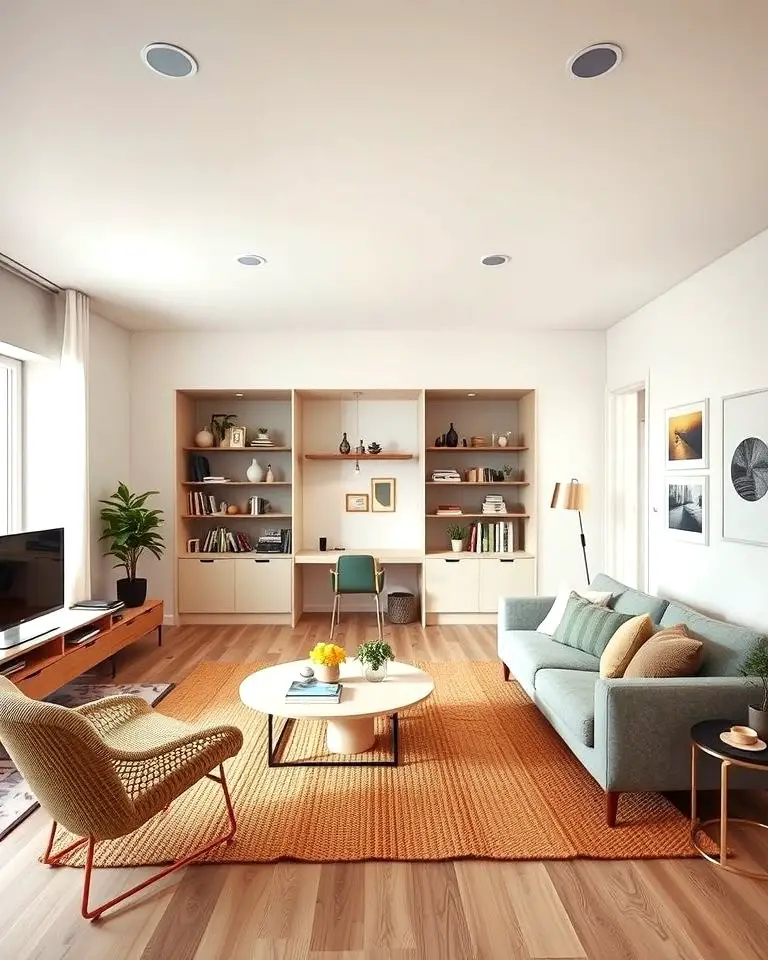
In harmony with the Bauhaus philosophy of functionality and efficiency, multi-functional spaces offer a clever solution to maximize space while preserving style. By seamlessly integrating different functions – such as a home office within a living room – you can create an environment that is both practical and aesthetically pleasing.
Modular furniture, partitions, or clever storage solutions can be used to define separate areas, resulting in a flexible and uncluttered living space that perfectly embodies the essence of modern living. Not only do these designs optimize your home’s usability, but they also maintain a cohesive look, making them an ideal choice for contemporary homes where adaptability is key.
Streamlined Bathroom Designs
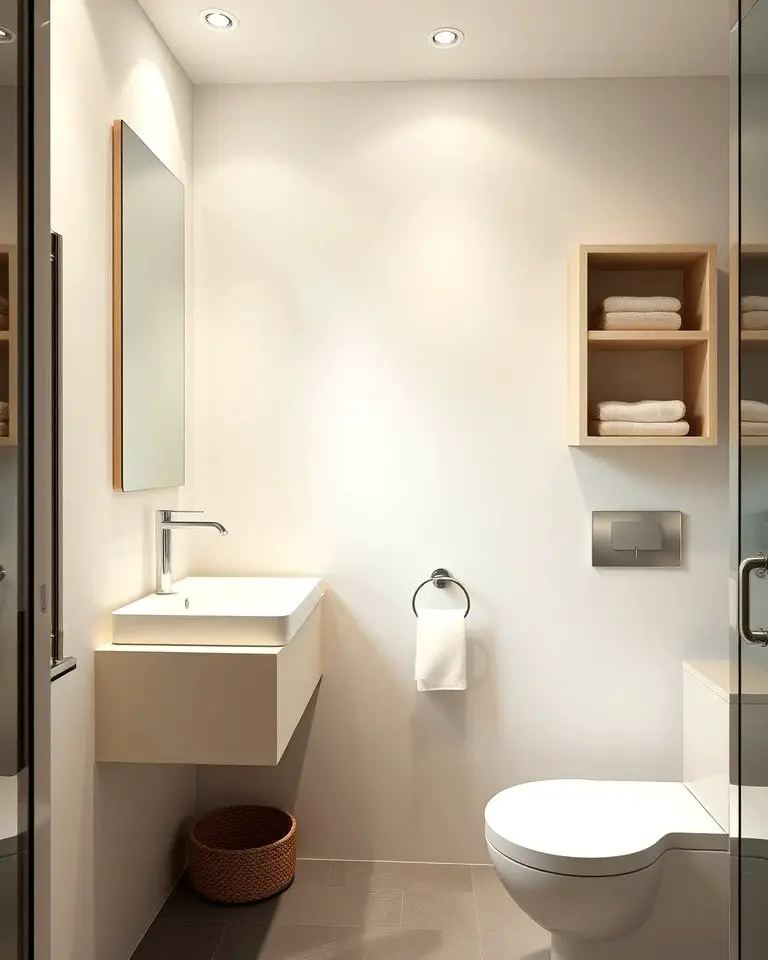
Incorporating Bauhaus-inspired principles into your bathroom design yields a space that seamlessly balances simplicity and functionality. A key element of this aesthetic is the emphasis on clean lines, where neutral tones and practical layouts converge to evoke a spa-like ambiance. To achieve this look, opt for materials like ceramic, glass, or stainless steel, which lend a sleek, modern edge to the room.
The strategic placement of wall-mounted fixtures and hidden storage solutions ensures a clutter-free environment that’s both easy to maintain and visually appealing. By focusing on the essentials, you can create a bathroom that is at once stylish, efficient, and inviting – a harmonious space that encourages relaxation and rejuvenation.
Functional Furniture Design
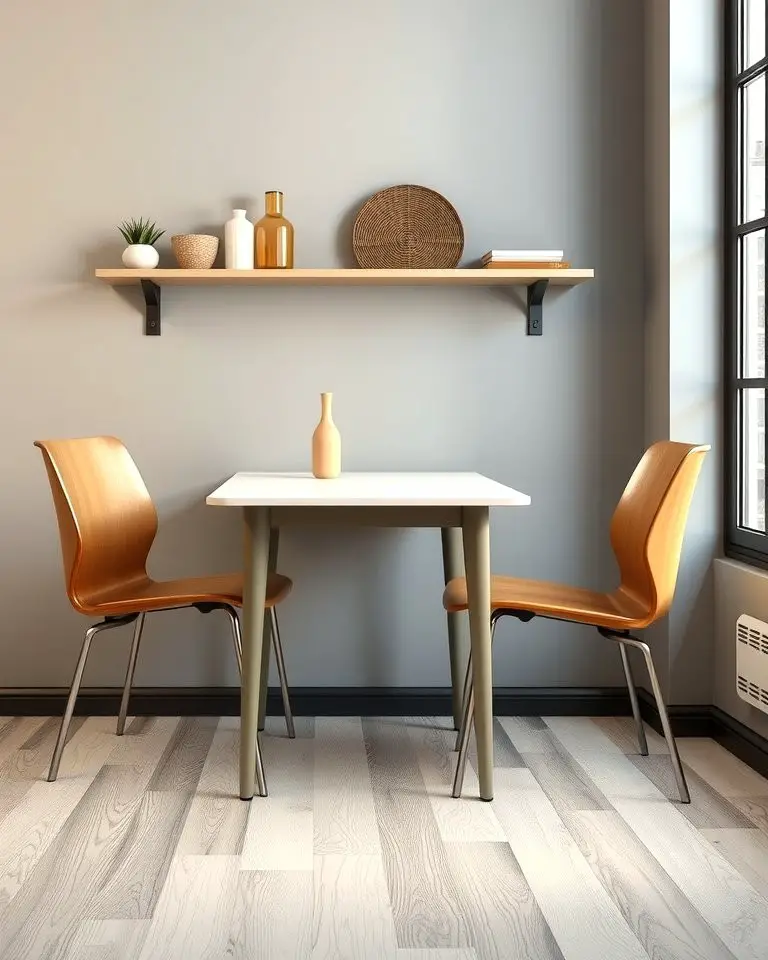
Functional furniture design plays a pivotal role in the principles of Bauhaus, where utility takes precedence over ornamentation. By combining simplicity with practicality, these pieces strike a perfect balance between form and function. Examples like cantilever chairs or minimalist shelving showcase their versatility and timeless appeal, making them suitable for diverse settings.
Furthermore, furniture that serves multiple purposes, such as storage ottomans or extendable tables, enables maximum space efficiency. The clean lines and neutral tones of these designs ensure they seamlessly integrate with various interiors, rendering them adaptable for both modern and traditional homes alike.
Streamlined Kitchen Layout
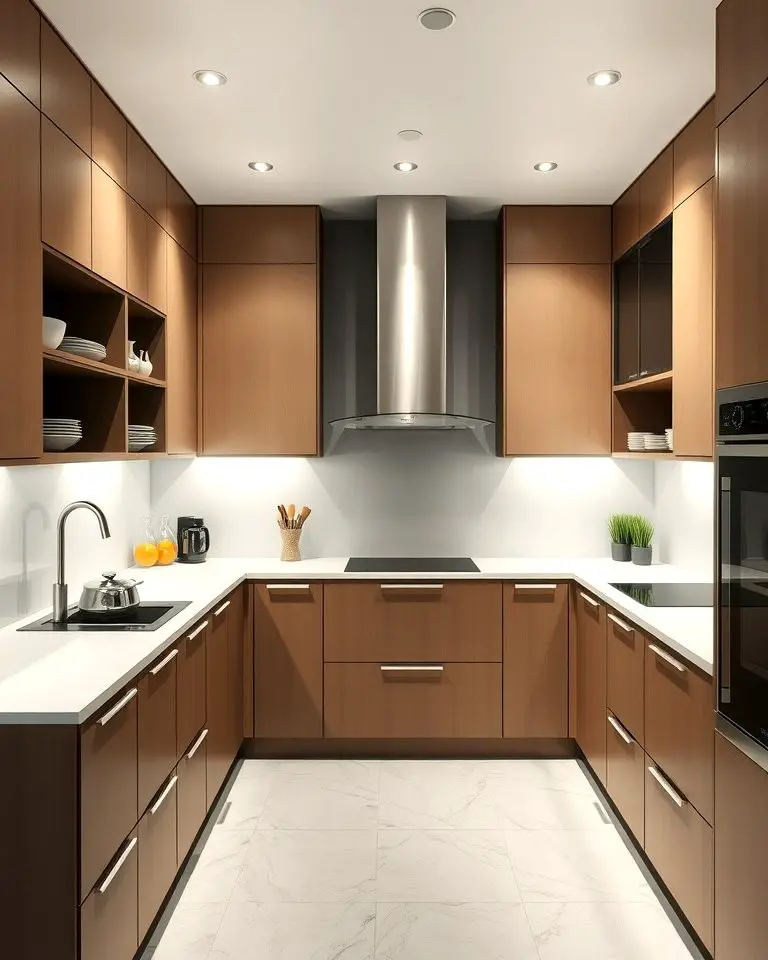
In the kitchen, embracing Bauhaus principles means adopting a meticulous approach to layout and design. By prioritizing unobstructed countertops, harmonious appliance integration, and understated cabinetry, this philosophy strikes a perfect balance between form and function. To achieve a seamless aesthetic, consider hardware-free cabinets in a single color palette, allowing the focus to remain on clean lines and minimal visual clutter.
Furthermore, selecting durable materials such as stainless steel or polished wood ensures both longevity and simplicity, ultimately creating a space that is not only functional but also serene and inviting for daily activities.
Open Plan Living Spaces

In Bauhaus-inspired interiors, open plan designs seamlessly integrate living spaces to create fluid, connected areas that encourage interaction and maximize natural light. The merging of zones like the living room, dining area, and kitchen not only enhances socializing but also allows for an abundance of sunlight to flood in through large windows. The lack of partitions further amplifies this sense of openness, yielding a bright, airy ambiance.
To maintain the free-flowing atmosphere, carefully placed furniture pieces can double as subtle dividers, striking a perfect balance between functionality and visual appeal. This design philosophy perfectly embodies modern living, harmoniously blending the practical with the inviting and the spacious.
Geometric Patterns
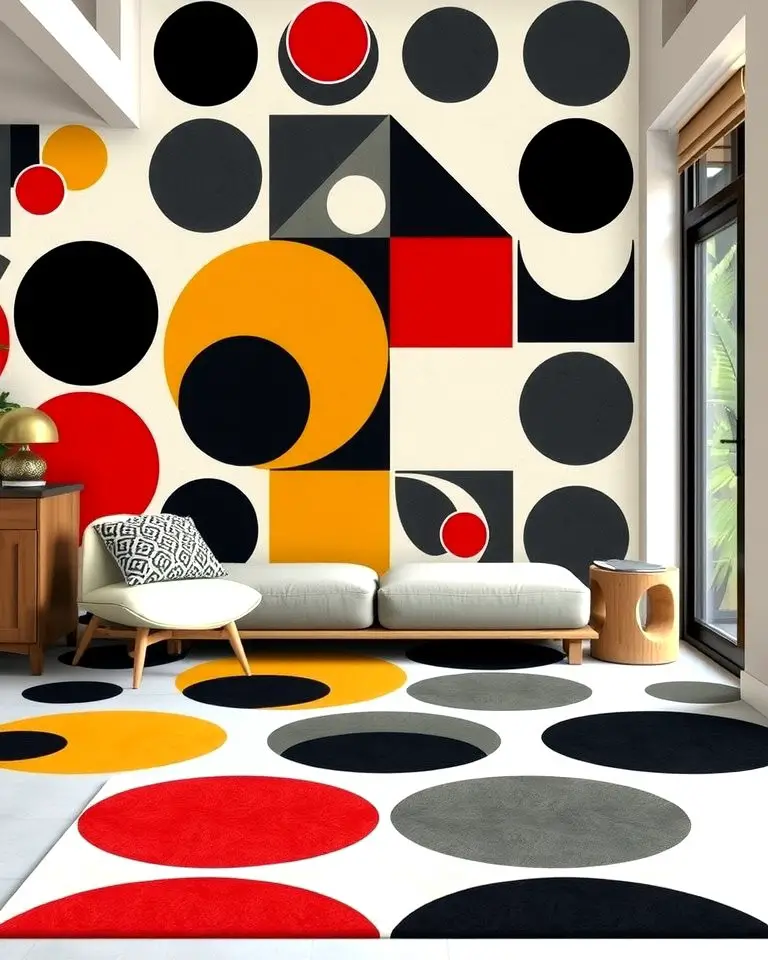
Within the realm of Bauhaus design, geometric patterns play a prominent role in adding visual complexity to otherwise simple compositions. This aesthetic is evident in various elements such as textiles, wall decor, and even architectural features. By incorporating shapes like circles, squares, and triangles in bold, contrasting hues, designers can effectively evoke the signature style of this movement.
Furthermore, incorporating geometric lighting fixtures or furniture pieces can further enhance this theme, emphasizing the importance of structure and balance that is characteristic of Bauhaus design. The resulting visual displays not only serve as striking focal points but also demonstrate the movement’s emphasis on harmonious proportions.
Accent Lighting with Purpose
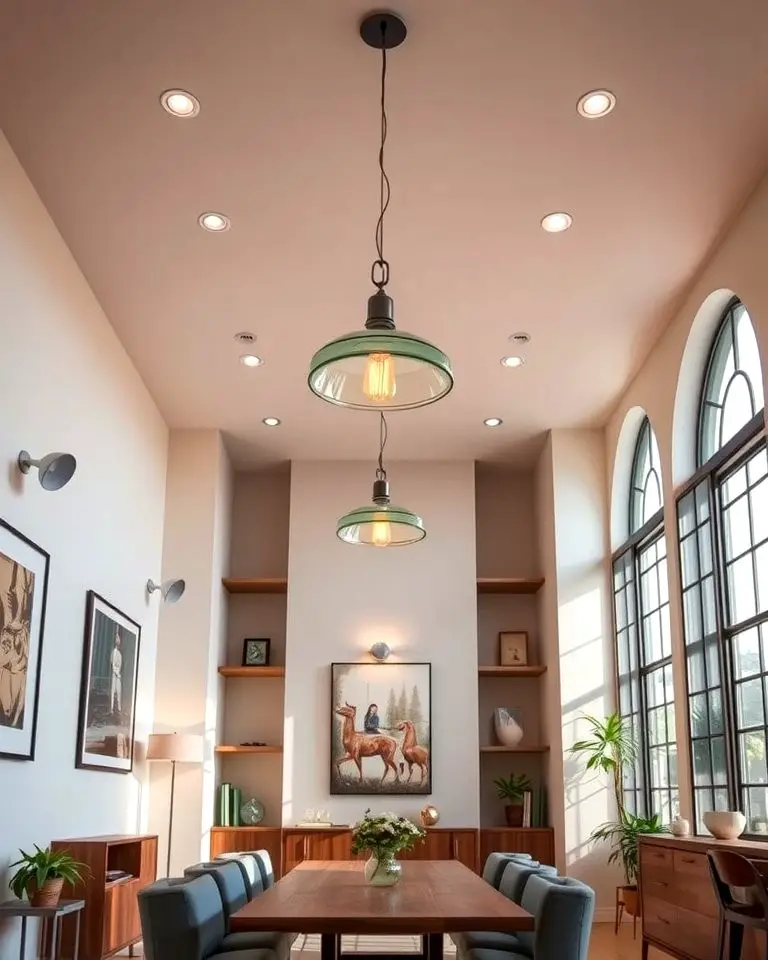
Within Bauhaus-inspired interiors, lighting plays a dual role – both enhancing functional aspects and contributing to the overall aesthetic. Opt for fixtures boasting clean lines and geometric silhouettes, such as pendant lights or wall sconces, to maintain harmony with the design’s minimalist sensibilities. By thoughtfully placing task lighting, you’ll create a space that serves its purpose effectively, whether for reading, cooking, or other daily activities.
The incorporation of adjustable or dimmable options further allows for tailored adjustments based on individual needs and desired moods. Ultimately, well-designed lighting not only optimizes functionality but also thoughtfully highlights architectural features, fostering a harmonious and inviting atmosphere.
Neutral Color Foundations
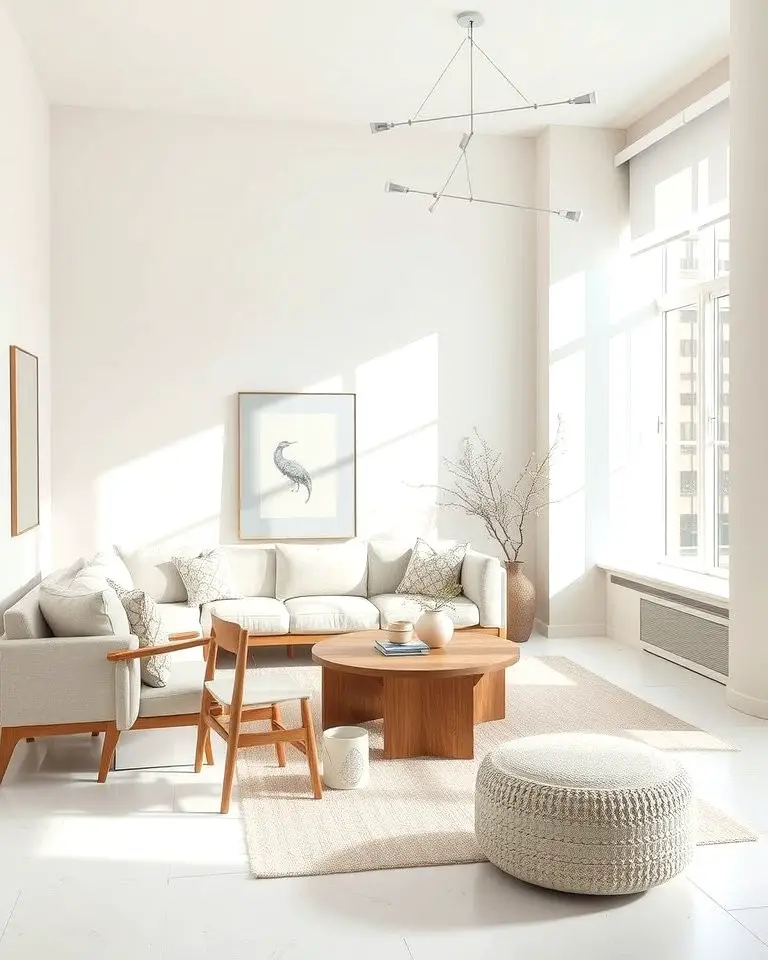
At the core of most Bauhaus interiors lies a neutral color scheme, providing a timeless and adaptable foundation. A palette comprising white, beige, gray, and black creates a calming and cohesive atmosphere, allowing other design elements to take center stage. Furthermore, these understated hues work in harmony with natural light, effectively amplifying its brightness and openness. To avoid monotony and add depth, incorporate textures through materials like wood, stone, or woven fabrics.
This versatile palette ensures longevity, effortlessly accommodating future updates or personal touches, making it a thoughtful choice for any Bauhaus-inspired space.
Integrated Storage Solutions
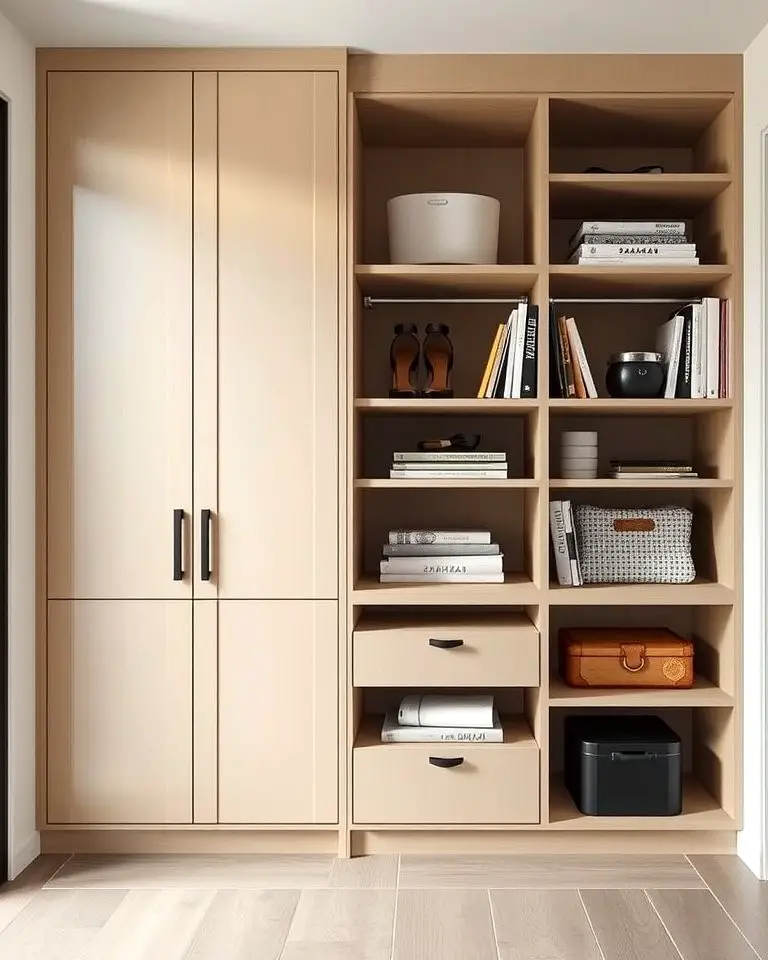
In Bauhaus-inspired interiors, functional design takes center stage through clever storage solutions. Walls and floors are transformed into seamless storage systems, with built-in shelves and under-bed compartments hiding clutter from view. This thoughtful approach not only declutters the space but also enhances its overall simplicity and functionality.
The incorporation of multi-functional furniture pieces, such as storage benches or wall-mounted desks, adds an extra layer of practicality without sacrificing aesthetic appeal. These innovative solutions are particularly valuable in smaller homes where maximizing every inch of available space is crucial.
Industrial Material Accents
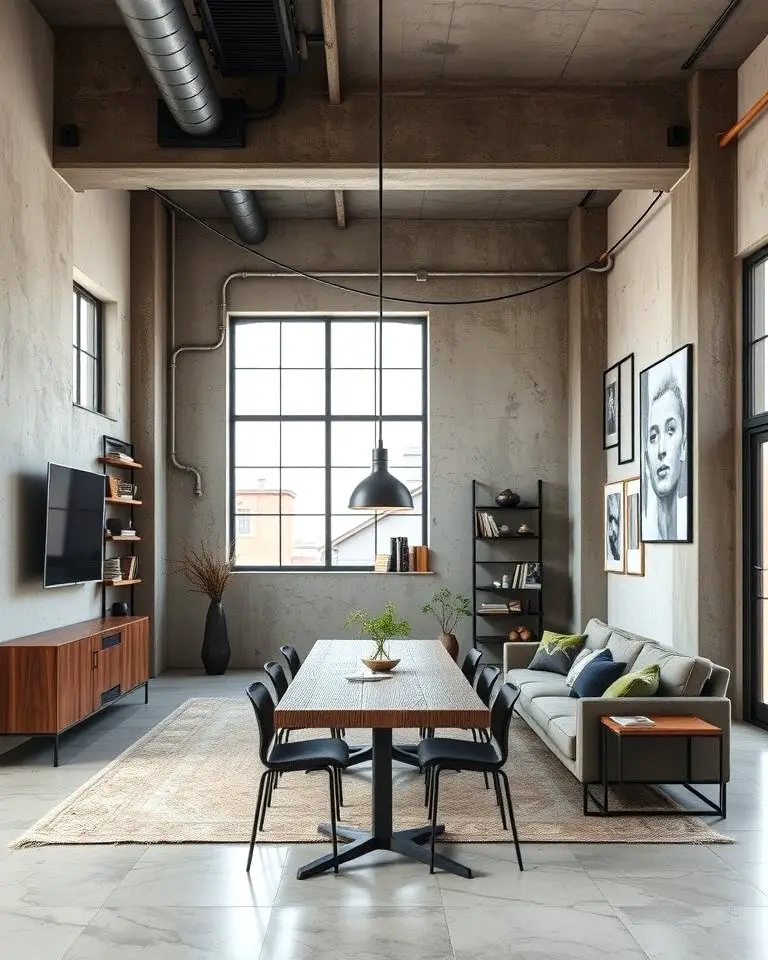
Embracing the raw, unfiltered essence of industrial materials, Bauhaus interiors seamlessly blend rugged textures with softer finishes. The strategic incorporation of exposed steel beams, concrete walls, and metal fixtures not only honors the movement’s modernist roots but also injects a dose of authenticity into any space.
This deliberate juxtaposition of tough, industrial elements against warm, organic materials like wood or fabric creates a harmonious balance that is at once visually striking and enduringly appealing. By thoughtfully introducing these accents through furniture, lighting, or decor, you can not only evoke the spirit of Bauhaus design but also imbue your space with a distinctive, contemporary flair.
Large Glass Windows
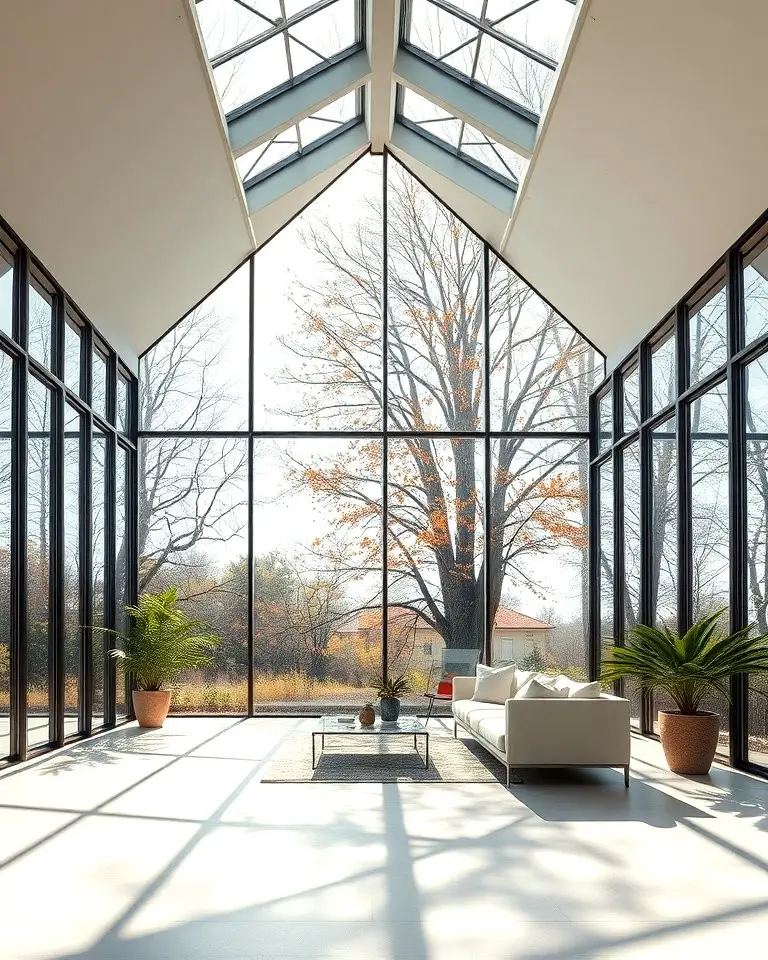
Bauhaus architecture and interiors are characterized by the liberal use of large glass windows. These expansive panes of glass have a profound impact on the spatial ambiance, flooding the area with an abundance of natural light that creates a sense of openness and airiness. The seamless transition between interior and exterior spaces also encourages a deep connection with nature.
The simplicity of the window frames, which often feature clean lines and minimal ornamentation, further reinforces the minimalist aesthetic. Moreover, energy-efficient glass not only enhances the visual appeal but also contributes to sustainability by minimizing reliance on artificial lighting during the day.
Modular Design Elements
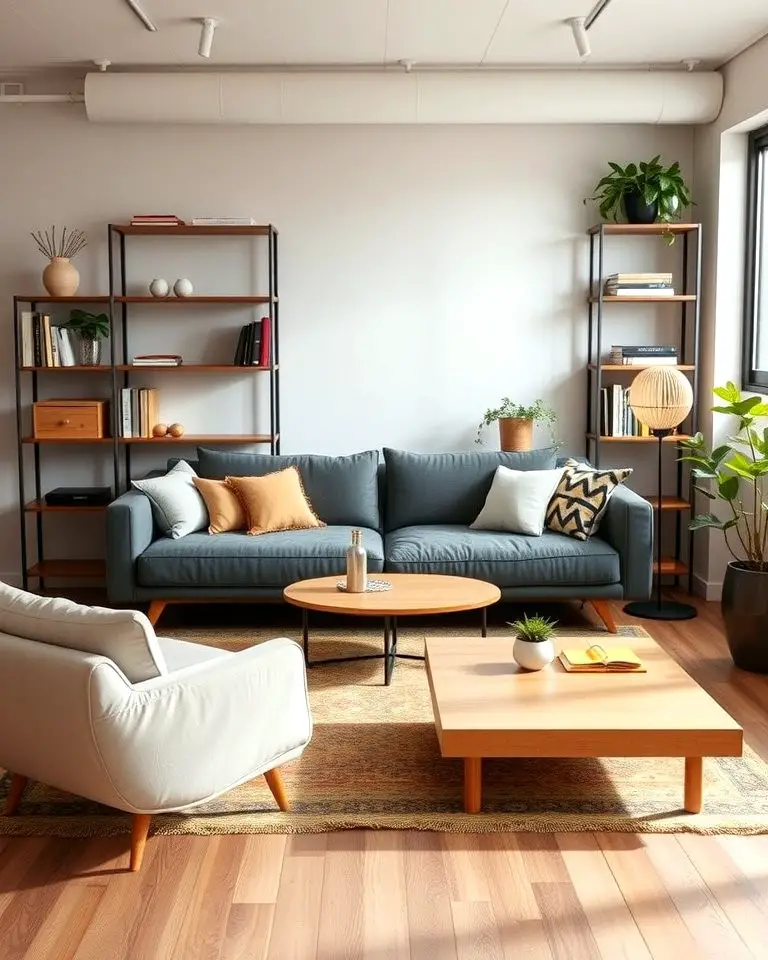
Modular design elements in Bauhaus-inspired furniture exemplify the philosophy’s emphasis on adaptability and functionality. By incorporating interchangeable components and adjustable configurations, these pieces seamlessly accommodate shifting needs and environments. The characteristic simplicity of their lines and palette enables effortless fusion with a wide range of decor styles.
Moreover, the lightweight nature and easy reconfigurability of modular furniture render it particularly well-suited for compact spaces or dynamic layouts. This approach fosters creativity and self-expression, empowering homeowners to thoughtfully curate their interiors according to their unique preferences while remaining true to the Bauhaus aesthetic.
Conclusion
The essence of Bauhaus interior design lies not just in its visual aesthetic, but in its commitment to simplicity, functionality, and enduring refinement. This philosophy manifests itself through the strategic use of geometric forms, understated color schemes, and modular furniture pieces that harmonize effortlessly.
By streamlining kitchen layouts, incorporating industrial-inspired accents, and thoughtfully balancing functional and tactile elements, you can curate a space that exudes modernity while still conveying warmth and invitation. Whether your passion lies in the unadorned elegance of purpose-built furnishings or the comforting presence of integrated textiles, these guiding principles offer boundless inspiration for revamping your living space.
By embracing the Bauhaus spirit, you’ll create an environment where form and function converge, proving that restraint can be a powerful catalyst for beauty.

I’m Brandon, the face behind the recipes. As a dedicated food enthusiast, I love experimenting with flavors and sharing my culinary adventures with you.
